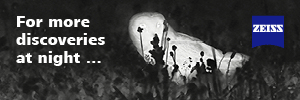
It seems doubly bizarre given that they include weight "as it gives a helpful index of the bulk of a bird" which, of course, is only true if you've some idea of the body length which they don't give! It's nor as if there isn't room as it could easily be added (and I'd be tempted to pencil it in from other sources). Perverse!
I've also now had time to compare it with the Collins Bird Guide particularly those species (mainly waders) that they have in common. I'd say that the text is far better written in Collins; more concise & accessible. On this basis I also reckon that, although remaining as thick, the page size could have been a third smaller making it more of a field guide.
Thanks for your critical additions, John. It often takes a view from the outside to get past the local pride, I guess.
I should add that Australia has had some very fine FGs before this new one has now been added.
Last edited:







